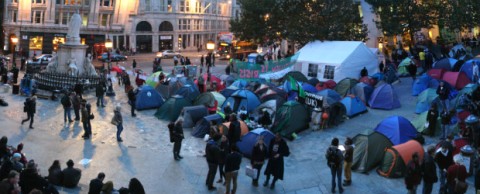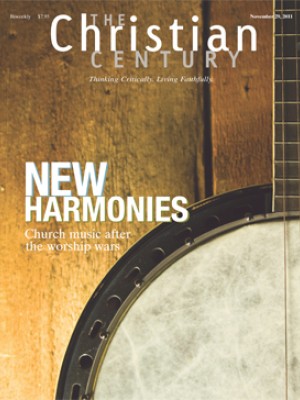Occupied holy ground

St. Paul's Cathedral in London has found itself caught, almost literally, between God and Mammon. Located in the city's financial district, St. Paul's has become a site for the Occupy London Stock Exchange protest, which is drawing attention to corporate greed and socially irresponsible behavior by banks and investment firms.
St. Paul's leaders weren't sure how to respond to the protesters camping in the courtyard. Though some were sympathetic to the protesters' concerns, they were also heartbroken at finding graffiti on the church wall and human waste in the courtyard and inside the church. The presence of the protesters also caused a sharp drop in visitors to the cathedral, which meant a loss of up to $24,000 a day.
Read our latest issue or browse back issues.
Church officials closed the cathedral, citing health and safety concerns, then opened it a week later, having apparently resolved those concerns. They vacillated between defending the protesters and urging them to go away. Some pressed for the police to remove the protesters, while others thought that such a step would be a public relations disaster. Amid the turmoil, the canon of the cathedral, the dean and a part-time chaplain resigned. By early November, the protesters had received assurances from the cathedral that they could stay at least until the new year.
Church leaders of all stripes can appreciate the practical challenges that St. Paul's has faced. Yet there is something profoundly right about a moral protest taking place in a cathedral courtyard. Since the Middle Ages, cathedral squares have been centers for commercial activity and political discussion. Following in this tradition, St. Paul's even dubs itself "a center for arts, learning and public debate." What a marvelous opportunity for the cathedral to foster learning and debate on the ethics of capitalism and on the social responsibilities of corporations.
What an opportunity, too, for the church to live out its particular vocation by inviting protesters to share in its prayers, liturgies and hymns and to hear the scriptural texts on justice, the defense of the poor, and love of one's enemies. Why not invite the protesters to come inside the cathedral for evening prayer? Why not offer services in the courtyard?
A cathedral is designed to be a place where humans glimpse an alternate way of seeing the world. The point of the soaring architecture and the glorious art is to reorient human beings and help them see the world according to God's purposes—and then to carry that vision back into everyday life.
In that respect, the work of a cathedral is profoundly linked to what the Occupy protesters are doing. They too are questioning the way things are and trying to envision a society oriented toward different priorities. St. Paul's, and every other church, should be grateful when strangers bring that project to the doorstep.






